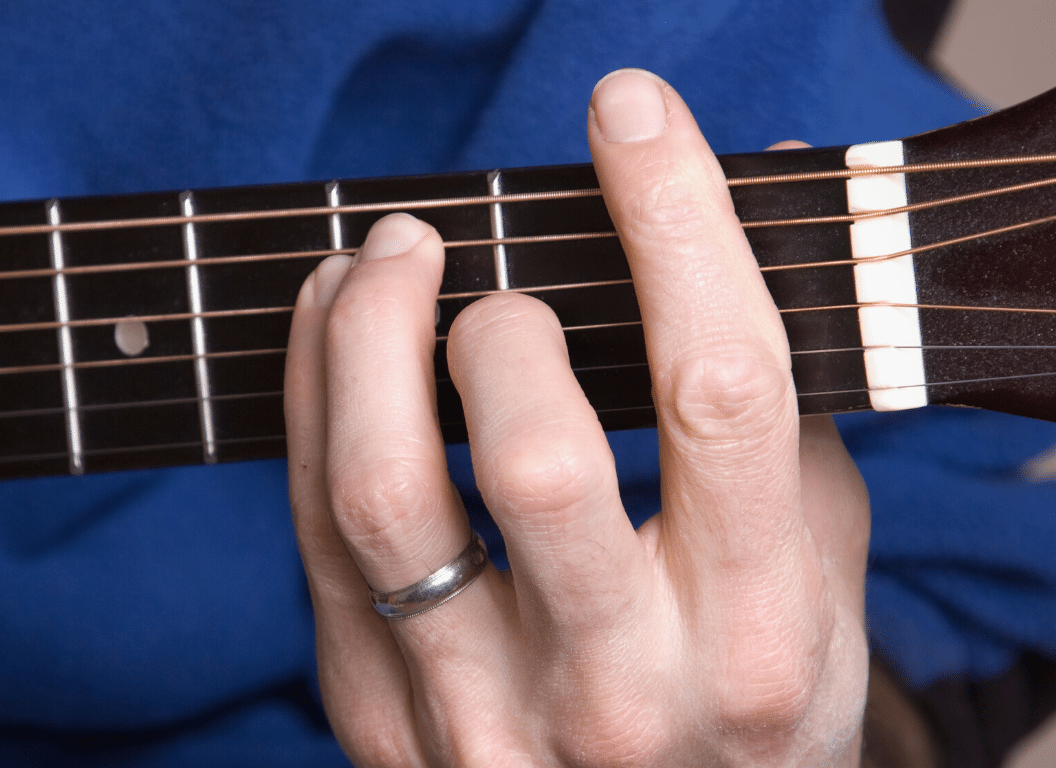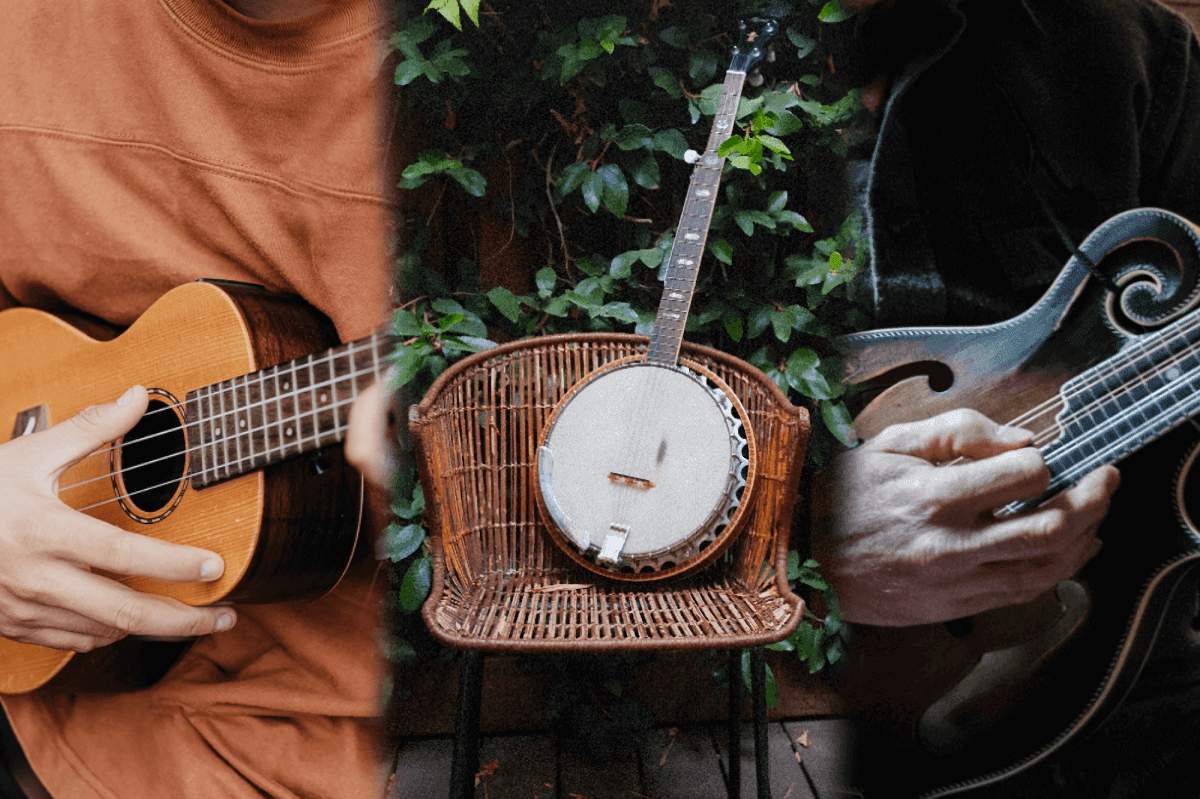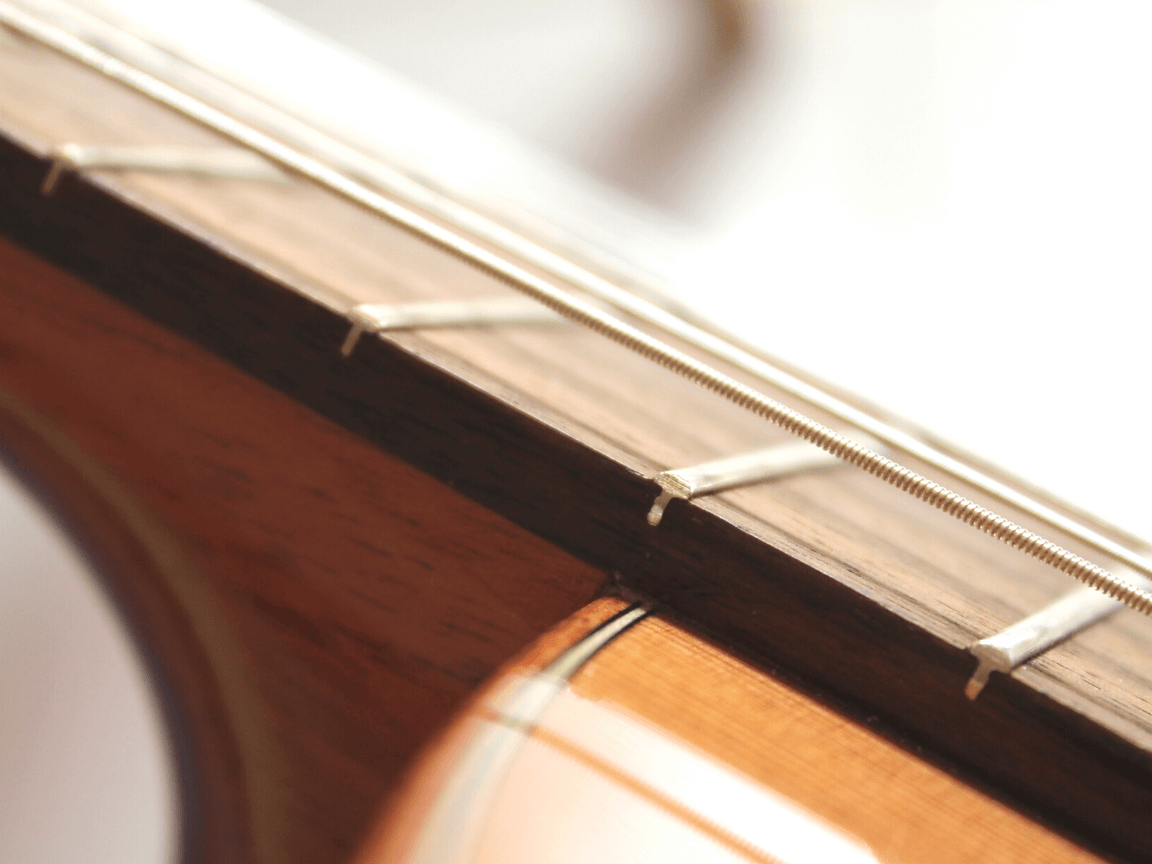In the world of guitar playing, barre chords often represent a formidable challenge for beginners and casual players alike.
They require a particular level of technical proficiency and manual dexterity which is not demanded by open chords.
Specifically, understanding the mechanics and intricacies of playing barre chords on an acoustic guitar tend to elude many aspiring guitarists.
The often-hefty build of acoustic guitars, coupled with a more significant string tension, may compound the difficulty.
However, the inherent challenge can be significantly abated through proper technique, practice, and understanding.
This article attempts to unearth the factors that can potentially make playing barre chords on an acoustic guitar somewhat more testing, and present ways to surmount these obstacles.
Table of Contents
- Is It Harder To Play Barre Chords On An Acoustic Guitar?
- Understanding Barre Chords’s Basic Theory and Anatomy
- Playing Barre Chords on Acoustic vs. Electric Guitars
- How Does String Action and Tension Affect Playing Barre Chords?
- Learning to Play Barre Chords on an Acoustic Guitar
- Tips to Improve Fretting Hand Strength for Barre Chords
- Common Mistakes When Playing Barre Chords
- Effective Practice Techniques To Use
- Acoustic Guitar Setups for Easier Barre Chord Playing
- The Bottom Line
Is It Harder To Play Barre Chords On An Acoustic Guitar?
Playing barre chords on an acoustic guitar can be more challenging than on an electric guitar due to the higher string action and increased string tension common in acoustic instruments. This requires greater strength and precision from the guitarist’s fretting hand. However, with consistent practice and proper technique, mastering barre chords on an acoustic guitar is entirely achievable.
Beyond simply understanding the mechanics of playing barre chords on an acoustic guitar, there are a myriad of other related topics to delve into as well.
This extends to the methods of strengthening your fretting hand for better chord transitions, the nuances behind adjusting your grip for different chord shapes, and tips on how to ease the discomfort typically associated with beginner’s practice of these chords.
In addition to this, discussion will be expanded on the impact of string gauge and guitar setup on playing these chords, which play a crucial role that is often overlooked by beginners.
Stay tuned as we uncover these aspects which can significantly enhance your playing experience and command over barre chords on an acoustic guitar.
Understanding Barre Chords’s Basic Theory and Anatomy
Learning to play barre chords can significantly expand your range and versatility as a guitarist.
But before you practice your first barre chord, it’s important to understand the theory and anatomy behind them.
Barre chords are called as such because you are essentially barring all the strings across a single fret with one finger, mimicking the nut, or zero fret, at the start of the guitar neck.
Aside from barring, you’ll then use your remaining fingers to form the rest of the chord shape.
Understanding the theory behind barre chords comes down to understanding how the guitar fretboard works.
As you move up one fret at a time, you’re essentially moving up in half steps or semitones.
This theory is particularly insightful when playing barre chords, as it allows you to transpose a chord shape up and down the neck to alter the chord’s pitch.
For instance, if you can play an open E shape, barring the first fret and playing the same shape will give you an F chord, as F is a half step up from E.
This transposition theory applies to not only major and minor chord shapes but also to complex and extended chord shapes, which furthers your chordal vocabulary.
For instance, if you can play an open E shape, barring the first fret and playing the same shape will give you an F chord, as F is a half step up from E.
This concept is essential in understanding how barre chords function and it also the reason why they are a vital part of any guitarist’s toolkit.
Let’s now move on to the anatomy of barre chords.
The barring finger (usually your index finger) is responsible for pressing down multiple strings across a single fret.
The other fingers then form the chord shape on the frets above.
For example, in an F barre chord, the index finger bars the first fret while the remaining fingers form the E shape from the second fret onwards.
All of your fingers must press down on the strings hard enough for each note to ring out clearly.
The barring finger (usually your index finger) is responsible for pressing down multiple strings across a single fret.
Remember that the pressure needs to be distributed evenly throughout your barring finger for all the notes to be heard.
Fretting hand strength and proper finger placement are, therefore, key factors in playing clean barre chords.
By watching this video, you’re going to understand by visual demonstration the proper way to hold and place your fingers on the frets of a barre chord.
Moving on, as we mentioned, the index finger is vital when playing barre chords.
It effectively transforms into a movable capo, holding down the strings across a single fret.
Learning to apply ample pressure evenly across all the strings is the first step in mastering barre chords.
This index finger’s pressure is vital as it effectively transforms into a movable capo, holding down the strings across a single fret
Once you have a grip on using your index finger properly, you’ll be able to produce clear and consistent sound from each string.
This principle remains consistent regardless of what type of guitar or what genre of music you’re playing.
Another factor to understanding the basic theory of barre chords is recognizing the shapes formed by your fingers.
Typically, these shapes correspond to the open chords of E, A, and sometimes C.
Your index finger forms the bar and the rest of your fingers shape the chord layout.
Typically, the shapes formed by your fingers while playing barre chords correspond to the open chords of E, A, and sometimes C
By moving these shapes up and down the neck of the guitar, you can create major, minor, or seventh chords corresponding to each fret’s note.
These shapes give barre chords their versatility and wide range of sound.
Playing Barre Chords on Acoustic vs. Electric Guitars
The type of guitar you’re playing can affect how you approach barre chords.
Acoustic and electric guitars come with their own set of challenges and advantages.
One isn’t necessarily easier than the other; instead, they require different techniques and considerations.
– Acoustic Guitars
Playing barre chords on an acoustic guitar can initially feel more challenging due to the higher string tension and larger neck profile.
You need considerable strength and endurance in your fretting hand to hold down the strings effectively.
However, the sound of barre chords on an acoustic guitar can be very rich and satisfying, which makes all your effort worthwhile.
Playing barre chords on an acoustic guitar can initially feel more challenging due to the higher string tension and larger neck profile
Also, it’s worth noting that mastering barre chords on an acoustic guitar can provide a strong foundation if you decide to switch to an electric guitar later on.
– Electric Guitars
In contrast, electric guitars often have a smaller neck profile and lighter string tension, which can make playing barre chords more comfortable.
However, the strings on an electric guitar are closer to the fretboard, and the pickups can amplify any buzzing or notes not held down cleanly.
This can make mistakes more prominent when playing barre chords on an electric guitar.
This can make mistakes more prominent when playing barre chords on an electric guitar
Therefore, precision and clean finger placement become crucial when playing barre chords on an electric guitar.
How Does String Action and Tension Affect Playing Barre Chords?
The action of your guitar, essentially the distance between the strings and the fretboard, can significantly affect your ability to play barre chords effectively.
The higher the action, the more challenging it can be to hold down all six strings evenly across a single fret, essential for successful barre chord play.
Conversely, lower action might make it easier to press the strings down, but too low and you risk fret buzz.
Guitar string tension also plays a critical role in the playability of barre chords.
String tension refers to the force needed to make the strings move.
– High Action, High Tension
A guitar with high action and high tension will be the most difficult to play barre chords on.
The greater distance and resistance make it more challenging to hold down a single barre across all the strings.
It requires greater finger strength and endurance, which for beginner players, can be discouraging and lead to slower progress.
A guitar with high action and high tension will be the most difficult to play barre chords on.
This is not to say that it’s impossible.
Many experienced guitarists can play barre chords effortlessly on high action, high tension guitars.
However, this generally comes with extensive practice and developed strength.
For beginners, these setups may be too challenging at first and could potentially lead to strain or injury.
– Low Action, Low Tension
A guitar with low action and low tension offers a much more comfortable playing experience for barre chords.
The lower resistance and closer strings to the fretboard make it less strenuous to hold down a barre across all strings.
Naturally, this means you can play for longer periods without fatigue.
Be warned, though, if your guitar’s action is too low, you risk experiencing fret-buzz, where the strings vibrate against the frets causing an unpleasant sound.
A guitar with low action and low tension offers a much more comfortable playing experience for barre chords.
Finding the balance is the key.
You want an action and tension that allows you to adequately press down on the strings without causing discomfort or unwanted sound effects.
If you’re finding barre chords particularly challenging, this video could help.
It reveals various tips and techniques that may make playing these chords easier and more comfortable, regardless of your guitar’s setup.
The techniques shown here can help enhance your playing skills and understand the intricate relationship between string action, tension, and barre chord playability.
Learning to Play Barre Chords on an Acoustic Guitar
Before starting to learn barre chords, it’s important to understand the crucial role of proper hand positioning.
Unlike playing individual notes, barre chords require you to hold down multiple strings at once with a single finger – typically your index finger.
Doing so across all six strings of an acoustic guitar can be challenging, so you need to make sure your hand is in the correct position.
Your thumb should be positioned so it provides support at the back of the guitar neck, directly opposite your index finger.
Don’t let your thumb creep up towards the top of the guitar neck, as this improper positioning tends to cause tension, reducing your finger flexibility.
Your thumb should be positioned so it provides support at the back of the guitar neck, directly opposite your index finger.
The importance of your thumb position cannot be overstated in providing necessary support for your fretting hand, especially when playing barre chords on an acoustic guitar where the neck is typically thicker compared to electric guitars.
This will also ensure a relaxed hand position, allowing for a smoother transition between different barre chord shapes.
– Starting with an Open Major Barre Chord
One of the simplest barre chords to start with is the E Major shape turned into a barre chord.
First, form the E Major shape using your middle, ring and pinky fingers instead of your index, middle and ring fingers.
With the E Major shape formed, slide up the neck one fret at a time while keeping your fingers in position.
Lastly, place your index finger across all the strings on the fret where you’ve moved to, pressing down hard enough so that all six strings ring clearly.
The result is a Major barre chord that can be moved up and down the neck to create different chords.
First, form the E Major shape using your middle, ring and pinky fingers instead of your index, middle and ring fingers.
Starting with an open major chord like E Major simplifies the process of learning barre chords by allowing you to keep your finger positioning consistent as you move up and down the neck.
It also gives you a solid foundation upon which to build more complex barre chord shapes.
– Adding More Barre Chords Variations to Your Playing
Once you’ve mastered the basic Major barre chord, you can add variations to your practice by changing the shape of your fretting hand while keeping the barre in place.
Variations to the Major barre chord can create minor, seventh, and ninth chords among others, expanding your chord library immensely.
Remember, the key to mastering barre chords is regular and focussed practice.
Your fingers will gradually build the strength and flexibility necessary to smoothly transition between different chord shapes and positions.
As a beginner, you may find some shapes more challenging to play than others, but don’t let this discourage you.
Persistence and patience are key in learning to play barre chords on an acoustic guitar.
Variations to the Major barre chord can create minor, seventh, and ninth chords among others, expanding your chord library immensely.
Introducing these variations not only enhances your chord vocabulary but also allows for more complex and interesting song arrangements.
With mastery of barre chords, you unlock a multitude of possibilities in your guitar playing, many of which are not possible through open chords alone.
Tips to Improve Fretting Hand Strength for Barre Chords
When playing barre chords, one crucial aspect is the strength of your fretting hand.
The power and stamina necessary to hold down all the strings of a chord simultaneously can be quite demanding.
Here are a few tips and exercises that can help you increase your fretting hand strength and stamina, making barre chords a less daunting challenge.
– Exercise 1: Finger Stretching
The first exercise is to stretch your fingers daily.
Simply extend your fingers straight out and then tighten them into a fist.
Repeat this exercise around 10-15 times each day to steadily increase your finger stretching ability.
This exercise cannot be undersold in its important in improving your fretting hand’s strength and adaptability.
By practicing this stretch, you can enhance the range of motion for your fingers.
It also provides the added benefit of improving your chord transition speed.
– Exercise 2: Spider Walk
The infamous “Spider Walk” is another popular exercise.
It involves extended practice sessions where you slowly and purposefully move each finger from fret to fret.
This is best practiced on each finger across all the strings.
The name comes from the resemblance of a crawling spider as each finger individually moves, improving finger independence and strength.
As a beginner, you may find the “Spider Walk” initially challenging, but don’t be discouraged.
With regular practice, you will notice notable improvements in your fretting hand strength.
– Exercise 3: Barre Chord Practice
A third exercise to improve your fretting hand strength is to regularly practice barre chords.
Do so by holding down a barre chord shape, strum, release the shape then form it again and strum.
Repeating this process will not only improve your hand strength but also reinforce your understanding of the chord shapes.
Like with any skill, consistency and repetition are key to improving your barre chord playing technique.
It’s important to keep in mind that improving fretting hand strength doesn’t happen overnight.
Take your time and practice consistently and soon, barre chords will become easier to play.
Common Mistakes When Playing Barre Chords
Learning and mastering barre chords is a rite of passage for many guitar players.
However, it is also a task fraught with common mistakes.
Understanding these errors is crucial in order to improve and become more proficient at playing these intricate chords.
– Incorrect Finger Placement
One common mistake with barre chords relate to incorrect finger placement.
Often, beginners place their barring finger too far from the fret wire, making the chords sound muffled or buzz.
The right placement is just behind the fret.
Ensuring your finger is correctly situated will result in a cleaner, more precise sound.
Furthermore, using the side of your index finger that’s closer to your thumb which is flatter and harder – rather than flat part – can produce better results.
Focusing on these two points can greatly enhance the sound quality of your barre chords.
– Insufficient Pressure
Another common error is not exerting enough pressure on the strings with the index finger.
This results in a weak or incomplete sound where not all notes of the chord are audible.
Applying the right pressure is a sensitive balance to strike, but it is essential for gaining control over your barre chords.
The necessary pressure varies depending on the guitar and string setup.
To make it easier, try rotating your finger slightly to the side and using the stronger bone area to apply pressure, not the soft underside of your finger.
– Incorrect Thumb Position
An overlooked aspect, often contributing to barre chord difficulties, is the thumb position on the neck of the guitar.
The thumb should rest halfway down the neck, providing a counter pressure to the index finger.
Thumb positioning is essential for providing the right leverage when playing barre chords.
Moving the thumb towards the top of the neck might seem more comfortable initially, but it makes it more difficult to press down all the strings adequately.
Therefore, maintaining a proper thumb position greatly aids in mastering the barre chords.
– Not Using Arm Strength
A not-so-commonly known method to assist in barre chord accuracy and sustainability is drawing strength from the arm rather than focusing all the strength in the fingers.
By incorporating the larger arm muscles, the strain on the fingers is alleviated, increasing endurance.
Using the strength of your arm can be a game-changer in playing barre chords.
This method may require some practice but once accustomed, it can make barre chords seem less daunting and more accessible.
In conclusion, paying attention to these key areas and working diligently on correcting these mistakes can lead to improved execution and sound quality when playing barre chords.
Effective Practice Techniques To Use
The ability to play barre chords effectively requires conscious training and consistent practice.
These chords, unlike others, demand more strength and finger flexibility, bringing a different level of complexity to guitar playing.
The process of mastering barre chords should not be rushed; rather, adopt step-by-step practice techniques specifically designed for barre chords.
In your exercises, be sure to set aside adequate time for essential warm-up sessions.
This aids in loosening up your fingers and preparing them for the strain brought about by barre chords.
Consider integrating finger strength exercises into your practice sessions.
Exercises like finger push-ups or spider exercises can go a long way in building the required endurance and dexterity.
Consistency in practice is the key to mastering barre chords.
Dedicate a consistent portion of your practice time to these chords, their various forms, and movements across the fretboard.
Indeed, commit to practicing barre chords every day.
Barre chords are a significant addition to your guitar skills, so dedicating ample time to their mastery is a valuable investment.
As you practice, remember to pay attention to your posture as it can significantly influence your fretting hand’s capacity.
Maintain a relaxed posture, avoid unnecessary tension on your shoulders or fingers, and always position your guitar for maximum accessibility.
Similarly, it’s crucial to ensure that your fretting hand is positioned correctly.
The fingers should be just behind the frets, and your index finger should be straight, creating a ‘bar’ across the guitar strings.
Another method to include in your practice regimen is the short-time practice method.
Practicing barre chords for a few brief sessions throughout the day would limit tension build-up, thus preventing fatigue.
Start slowly and gradually increase speed.
Begin by playing the chords slowly to correct form and fingerings, then eventually increase your speed as your comfort and confidence grow.
You’ll gain in-depth information on mastering barre chords from the video.
The detailed demonstrations and comprehensive explanations will guide you on the best practice methods for barre chords.
Furthermore, it’s beneficial to play along to songs that incorporate barre chords.
This assists in both mastering the chords and understanding their usage in different musical contexts.
– Using A Metronome
Another recommended practice technique is to incorporate a metronome into your exercise routine.
A metronome contributes to developing your timing and rhythm while strengthening your fretting hand.
It also assists in steadily increasing your playing speed.
By gradually increasing the metronome’s tempo, you can develop accuracy and speed without causing unnecessary strain on your hand.
Playing with a metronome challenges your skill level and contributes to a stable rhythm and steady hand movements, both of which are crucial for barre chord mastery.
To conclude, practicing barre chords is a rite of passage for every guitar player.
It might seem challenging initially, but with persistent practice, correct positioning and mindful exercises, you will find your comfort level increasing, and eventually, you’d be playing the chords with relative ease.
– Summary and Encouragement
In summary, the road to barre chord mastery might be challenging but don’t be discouraged.
Practice, patience, and persistence are integral to this journey, and with the right approaches and techniques, you’ll soon master this important aspect of guitar playing.
Remember, every accomplished guitarist was once at the level you are now.
Understand that it’s a process and where you are is a step in the right direction.
Finally, always enjoy the process.
The joy in the journey of learning and improving your skills can be just as rewarding as the outcome.
So take a deep breath, relax your shoulders, and embrace the journey.
Acoustic Guitar Setups for Easier Barre Chord Playing
The setup of your acoustic guitar can play a significant part in how easy or difficult it is to play barre chords.
Having the right setup can make the task of pressing down multiple strings across a single fret much less daunting.
There are several key factors in an acoustic guitar setup that can influence the ease of barre chord playing, including the string gauge, action, and neck width.
– String Gauge and Barre Chords
Firstly, the gauge of your guitar strings can considerably impact your ability to play barre chords.
Lighter gauge strings generally require less finger pressure to fret and can be easier for beginners or players with less finger strength.
However, keep in mind that lighter gauge strings can sometimes produce a less full-bodied tone than heavier ones.
Choosing the right string gauge can be a trial-and-error process as you balance the ease of playability with the tone you want from your instrument.
In relation to the above quote, experimentation is key.
You might need to try different gauge strings until you find a balance that works best for your individual playing style and physical comfort.
– Action, Neck Width, and Barre Chords
Another significant factor in your guitar setup is the action—the distance between the strings and the fretboard.
Lower action can make it easier to press the strings down against the frets, which can be particularly beneficial when playing barre chords.
However, if the action is too low, it may cause fret buzz, an annoying buzzing sound that occurs when a string vibrating freely contacts a fret.
The width of the guitar’s neck also plays a role in playing barre chords.
A narrower neck can make it easier to reach across all six strings with your index finger, but it might feel too cramped for those with larger hands.
Adjusting the action or choosing a guitar with a suitable neck width for your hand can greatly enhance your ease of barre chord playing.
To back up this point, it’s crucial to understand that a comfortable guitar setup is highly personal.
It needs to take into account the player’s hand size, finger strength, and preferred playing style.
– Professional Setup for Optimal Playability
If you’re not quite sure how to achieve the best setup for barre chords, consider seeking help from a professional guitar technician.
They have the expertise to properly adjust your guitar’s action, recommend the correct string gauge, and make other necessary adjustments.
This can result in an optimized guitar setup that will make your barre chord journey easier and more satisfying.
The Bottom Line
Mastering barre chords greatly expands your range of musical options and adds depth to your acoustic guitar playing.
In understanding their fundamental theory and anatomy, you uncover the nuances between playing them on different types of guitars.
Moreover, being aware of how string tension and action influence your play can guide in perfecting your technique.
It can take time and dedication to build the necessary hand strength and dexterity, but with regular, efficient practice and by avoiding common mistakes, these skills can be honed.
On a practical level, having a well-set-up guitar can significantly ease your barre chord playing.
Familiarizing yourself with popular songs that feature barre chords can offer inspiring, real-world context.
Ultimately, continued exploration of a variety of chords can only enrich your music, rendering you not just a player, but a versatile musician.

An avid storyteller and music lover that devotes all his free time to mastering the art of playing guitar. I’ve played acoustic for 6 years, and recently started playing electric guitars. Currently playing an Epiphone SG Special!




